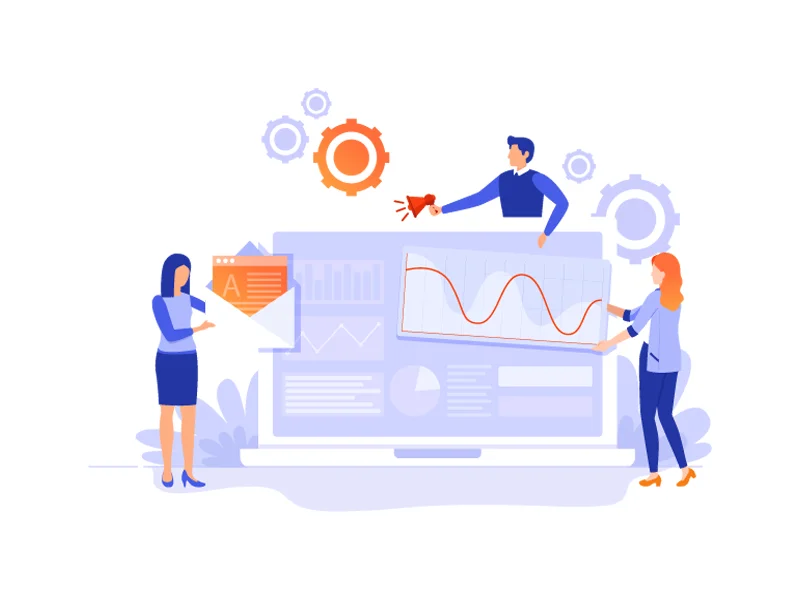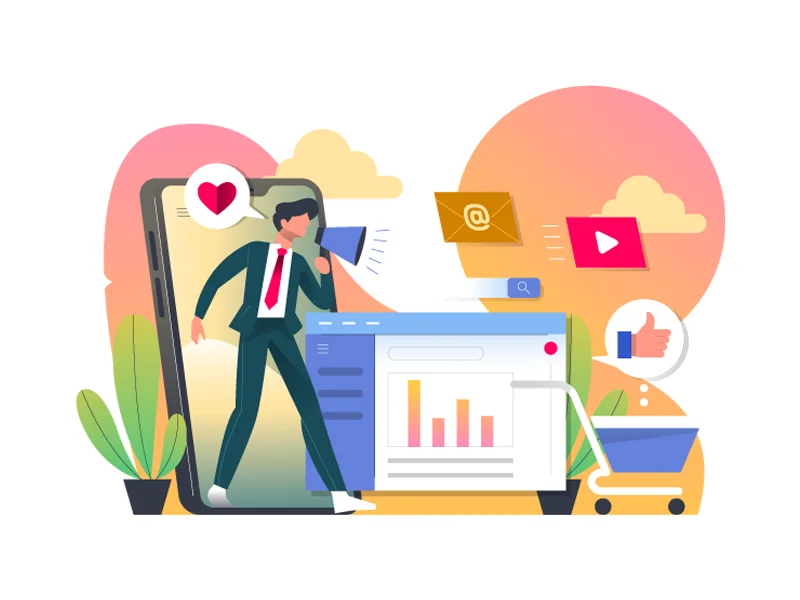

IS INDIA READY FOR DIGITALIZATION?
Digital Revolution is all about designing and making a better tomorrow.
This transformation can have an influential bounce in various steps on varied
areas, societies, economies and above the humanity.
Not only that, but digitalization also transformed the pattern in which
the data and information scattered across various sectors of the world. Giving
channels for businesses to walk forward beyond the national markets and stocks
to other markets, thereby enhancing international markets, resulting in the
interconnection and communication of the globe.
One of the major symptoms and signs of this transformation that prevails
is the digital revolution in India that has been catching hold since smartphones
and 4G have started to grow commonplace within urban sections, including many
rural areas. There are not less than 200 million smartphone operators, and 550
million internet subscribers lived in India in 2019. Moreover, this revolution
is upgraded by necessary rural-to-urban movement as poor villagers widen their
opportunities in India's modern cities.
Since 2014 the Indian government has taken various actions focussing on
bringing digitalization by different measures. An example of this is demonetization,
which has uplifted and gained global attention and is associated with
short-term jobless scenarios and economic downfall. However, it also reveals
compliance for government leadership and monitoring to upheld India's digital
transformation and shift.
PAST DATA:
- A 2014 Google India report
depicts that 21% of the Indian crowd prefers to use the internet in the
Hindi language with sufficient content adoption depicting a growth of 94%
year on year compared to only 19% growth for English digital content
online.
- In 2011, India was the third
biggest internet user base around the globe. After two years in 2013,
India was shining up to hold the second-largest user base position
worldwide.
- Of the overall content
designed and posted online, only approximately 0.1% of it is in Hindi,
which covers pride of place as one of the most openly used and spoken
languages globally.
- If the predictions from
UNESCO are anything to attempt by, then almost 197 of more than 1652
Indian languages are facing a slow, irreversible death.
- By 2018, India will be
approximately 250 million online potential consumers, 200 million rural
online optimizers, and an e-commerce business worth close to $70 billion.
- A Cisco report predicts that
India is the second biggest and fastest-growing smartphone market
worldwide with nearly 150 million smartphone users and is predicted to
cross the 650 million mark by the year 2019.
1. Applications
- Digital Locker System focuses on reducing
physical documents and data usage and enables sharing of e-documents
across firms and agencies. The transfer of the e-documents will be done
through registered repositories, thereby ensuring the authenticity of the
data and documents online.
- MyGov.in has been performed as a platform
for citizen engagement and involvement in governance through a
"Discuss", "Do", and "Disseminate" approach
and technique. The mobile App for MyGov would keep these factors to users
on a mobile phone. In the end, mygov. It is an online platform where
citizens can involve in their local governance by suggesting answers and
solutions to civil crises, tracking the activity of their representatives,
and reviewing government decisions.
- Users and Government firms
would use Swachh Bharat Mission (SBM) Mobile app to accomplish the
Swachh Bharat Mission target.
- BHIM Latest and the modest source of products and services under Digital India, BHIM is an initiative to give fast, secure, and reliable cashless payments as per your cell phones. It is an unidentified Payment Interface for digital payments that have been proven possible because of the connection of Aadhar cards to banks.
- ESign This framework and the
structural plan would boost digital signatures for online data and
documents with Aadhar authentication and verification. Since the
government procedures are all using digital techniques and structures,
this would be a time saver.
Make in India and Digital India programs.
The adoption and acceptance of technologies and techniques like cloud
channels or platforms and applications have multiplied significantly to our
digital momentum. The Make in India and Digital India programs and procedures
have now preferred cloud and other digital disruptors to judge and assist in
creating the latest and comprehensive nation. The cloud is open-source, which
is fit for smoothly moving and raising economies. India assists in lessening
troubles to non-economic technology, developing opportunities for fresh
services.
2. Education Sector
It is always the foremost important initiative and focuses mainly on
government. There are various and a wide range of schemes in the education
sector. Let's understand them in detail.
- SWAYAM or Study Webs of
Active–Learning for Young Enthusiastic Minds- This scheme was targeted to
boost the three major sources of Education Policy: access, equity, and
quality. This digital scheme and procedure enhance education at the
doorstep of many children and link the digital divide as children who
cannot go for mainstream or formal education can get to this application.
The scheme provides an option for students to target courses taught in
classrooms from 9th standard to post-graduation anywhere and at any time
slot.
- e-PATHSHALA- This digital scheme
and technique broadcast and show all educational content through the
website and mobile app.
- Mid-Day Meal Monitoring and
managing App/ Shaala Sidhi/ Shaala Darpan- 3 of these centres on
the quality and order of school administration and manages the schools and
Kendriya Vidyalas to encourage and enhance the status of education.
- OLABS- The online labs
promote and encourage research skills and talents for school lab
experiments as they provide students with the security and safety of
performing experiments over the internet.
3. Health Services
The health sector is much required for a safe, secure, and healthy future of society. Therefore, Digital AIIMS focuses on a plan that ensures efficient interrelation and communication among UIDAI and AIIMS.
4. Agriculture Sector
When India is upgrading and becoming digital, our farmers also upgrade
and benefit from it. Few schemes in the farming sector are as follows:
• Mkisan
• Farmer portal
• Kisan Suvidha app
• Pusa Krishi
• Soil Health Card app
• eNAM
• Crop Insurance Mobile APP
• Agri Market app
• Fertilizer
5. Women Safety
Seeking pace to women's safety, applications like the 'Nirbhaya
app' and the 'Himmat app' have been initiated that benefit to send of distress
calls. Nirbhaya is a mobile phone app introduced by Uttar Pradesh Police in
India that is developed to upgrade the safety and precautions of women. In
addition, in its initiative and up-gradation for women's safety and security,
Delhi Police has initiated a mobile application named HIMMAT (Courage).
Introduction of GST (Goods and service tax)
The rise of GDP is because of GST. It has benefited in lessening tax
rates, reducing multiple point taxation, and make huge revenues. Importantly, a
uniform tax system has developed India into a moderate market and wide trade,
business, and export.
6. E-Payments
Bharat Interface for Money-Unified Payment Interface (BHIM UPI), which covers over 600 million sales in 2019, is the grit of joining and connecting all banks and customers and is front-ended by various national and international digital programs. Paytm, Google Pay, Amazon pay, etc., all decide their levels and pace in the era of digitalization.
No nation is ever ready for a big change. But if it would have waited
for the correct pace and time, it would never have upgraded.
Digitalization is a very time-consuming and cumbersome procedure. So,
the foundation is to be done as fast as possible. The latest economic model
under Digital India will get the government, businesses, and citizens to come
together where every stakeholder will benefit and help. But, in a nation with a
population of 1.32 billion, adopting digitization will not take place
overnight. It will take us many more years to amend and become an actual
digital nation, and we have already marked the digital Journey.
Indians are adopting digitalization slowly; it takes much more years to
accept full digitalization; Indians take time to work and adopt digitalization
as the above data depicts increasing digital acceptance year by year.

